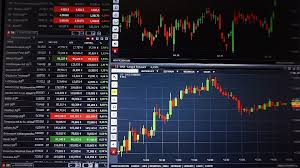
Forex trading charts are essential tools for traders, providing visual representations of currency price movements over time. They help traders analyze market trends and make informed decisions. Understanding these charts can significantly impact trading success. In this article, we’ll explore different types of forex trading charts, how to read them, and strategies for effective analysis. For an extensive resource on forex trading, check out forex trading charts https://forex-exregister.com/.
What Are Forex Trading Charts?
Forex trading charts are graphical representations of the price movements of currency pairs in the foreign exchange market. They display historical data and can include various indicators, which assist traders in identifying trends and making predictions about future price movements.
Types of Forex Trading Charts
There are several types of charts used in forex trading. The most common ones include:
1. Line Charts
Line charts are the simplest type of forex charts. They connect closing prices over a specified period, providing a clear view of price movements. Traders often use line charts for a quick overview of price trends. However, they may not offer sufficient detail for in-depth analysis.
2. Bar Charts
Bar charts offer more information than line charts. Each bar represents a specific time period and shows the opening, closing, high, and low prices. This allows traders to understand price ranges and volatility within that period, making bar charts a better choice for detailed analysis.
3. Candlestick Charts
Candlestick charts are popular among forex traders due to their informative visual representation. Each candlestick displays the open, high, low, and close prices in a single unit. The body of the candlestick is filled if the closing price is lower than the opening price (bearish) and hollow (or colored) if it’s higher (bullish). Patterns formed by candlesticks can indicate market sentiment and potential reversals.
4. Heiken Ashi Charts
Heiken Ashi charts are a modified version of candlestick charts that average price data to smooth out fluctuations. This makes them particularly useful for identifying trends. By reducing market noise, Heiken Ashi charts can help traders spot potential entry and exit points more clearly.
Reading Forex Trading Charts
Reading forex trading charts requires an understanding of various elements that comprise them:

Price Axis
The vertical axis (y-axis) of a forex chart represents the price levels of the currency pair. It shows how much one currency is worth against another.
Time Axis
The horizontal axis (x-axis) displays the time frame. Traders can adjust the time frame to view price movements over different periods, such as minutes, hours, days, or weeks.
Volume Indicators
Some trading charts also include volume indicators, which show the number of trades executed during a specific time frame. High volume often supports price movements, indicating strong buying or selling pressure.
Using Indicators with Forex Trading Charts
Indicators are essential tools that traders use alongside charts to gain insights into market conditions. Some popular indicators include:
1. Moving Averages
Moving averages smooth out price data by creating a constantly updated average price. They help traders identify prevailing trends and potential reversal points.
2. RSI (Relative Strength Index)
The RSI is a momentum oscillator that measures the speed and change of price movements. It ranges from 0 to 100 and can indicate overbought or oversold conditions in the market.
3. MACD (Moving Average Convergence Divergence)
MACD is a trend-following momentum indicator that shows the relationship between two moving averages. Traders often use it to identify bullish or bearish trends and potential buy and sell signals.
Developing a Trading Strategy Using Forex Charts
To become a successful trader, developing a solid trading strategy is crucial. Here are some tips on building a strategy based on forex trading charts:
1. Define Your Goals

Clearly outline your trading objectives. Are you looking for short-term gains or long-term investments? Defining your goals will help you choose the appropriate charts and strategies.
2. Analyze Different Time Frames
Examine charts with multiple time frames to gain a comprehensive understanding of market trends. A combination of short-term and long-term analysis can provide a holistic view of price action.
3. Confirm Signals with Indicators
Always confirm signals from your charts with technical indicators. This approach helps reduce false signals and increases the chances of successful trades.
4. Keep a Trading Journal
Document your trades, strategies, and outcomes in a trading journal. Reflecting on past trades can help you improve your strategy and adapt to changing market conditions.
Common Mistakes to Avoid When Using Forex Charts
Despite their effectiveness, traders often make mistakes with forex charts. Avoid the following common pitfalls:
1. Overcomplicating Analysis
It’s easy to get overwhelmed by indicators and complex strategies. Keep it simple and focus on a few reliable techniques that work for you.
2. Neglecting Market News
Charts do not tell the whole story. Economic indicators, geopolitical events, and market sentiment can significantly impact currency prices. Always stay informed.
3. Ignoring Stop-Loss Orders
Risk management is vital in trading. Always use stop-loss orders to protect your capital and control losses.
Conclusion
Forex trading charts are powerful tools that can enhance your trading experience. By understanding the various chart types, learning to read them effectively, and developing a solid strategy, you can improve your trading performance. Remember to combine technical analysis with market awareness for the best results. With practice and patience, you can become proficient in using forex trading charts and achieve your financial goals.

